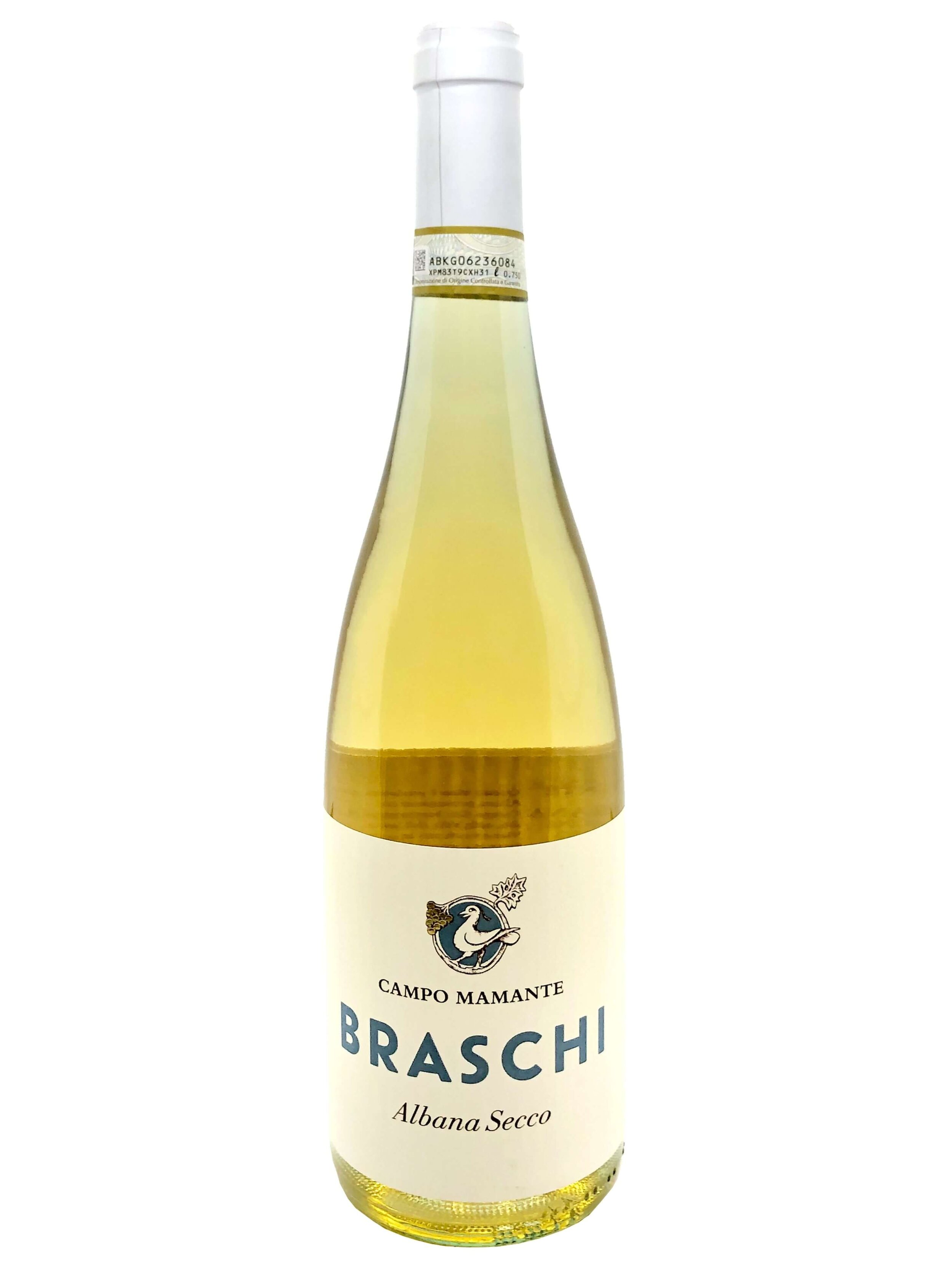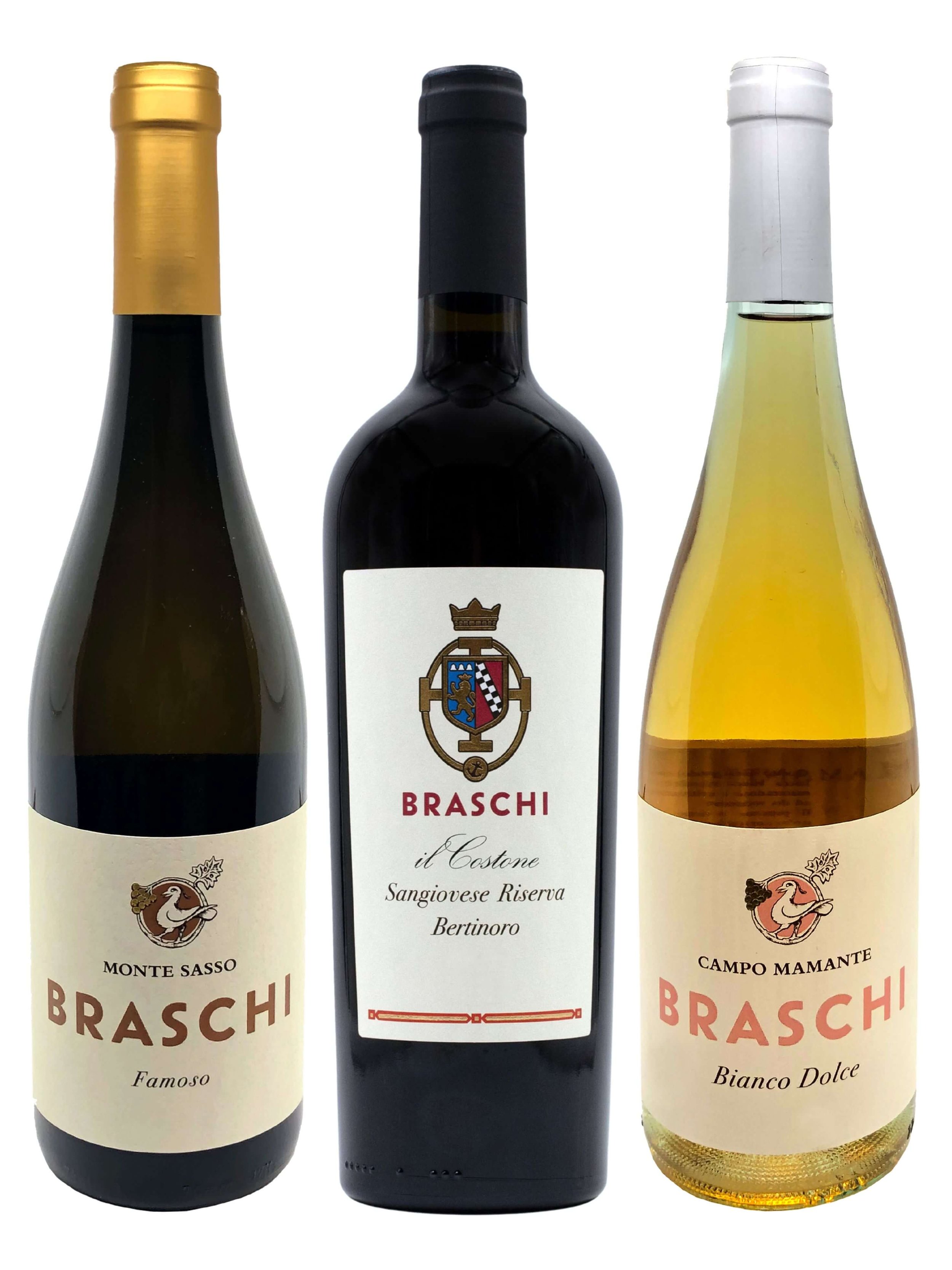Broaden Your White Wine Horizons with Albana
In this article, we will give some attention to an unknown Italian white grape, Albana. In Italy, it is a status symbol of sorts since it was the first Italian white wine to be given DOCG designation. DOCG is the most stringent appellation level in Italy standing for Denominazione di Origine Contrallata Garantita, therefore DOCG wines are those considered to have the highest quality level.
It was in 1987 and the people from Romagna, Italy were thrilled that this this staple of the Romagna wine scene achieved such status. To appreciate this fact a little further, we explore this fascinating and multi-faceted white grape that, despite its renown in its homeland of Romagna, Italy, it is relatively unknown around the world.
All About Albana
Albana is a white grape variety that is indigenous to the Romagna region of Italy (read more about Romagna and its history here). In Romagna, albana is regarded as the most important grape variety of the region, and it has been cultivated there for centuries. In fact, there are writings of Pliny the EIder and Younger that make mention of albana. Some think the name itself may have come from Roman influence with the word albana being derived from albus or ‘white’ in latin. And, for those of you who follow our blog would know that Roman Empress Galla Placidia was one of the biggest ancient champions of the grape, giving the winemaking town ‘Bertinoro’ in Romagna its name, thanks to the thick skins which impart a golden color which according to Galla Placidia is like to drink gold, which translates to ‘bere oro’ in Italian.
As we will see further on during our interview with Braschi winery owner Davide Castagnoli, affectionately described as a “Romagna DOC” due to his origins and evangelistic nature about his roots in Romagna, part of albana’s appeal lies in the uniqueness of the grape. Thick skinned, it is a versatile grape that can be used to produce a wide range of wines, from dry wines that are crisp to sweet wines that are luscious. If this grape was an actor, it would be a triple threat: it makes dry wines, sweet wines, passito style dessert wines, even sparkling wines.
Its high acidity and strong sapidity, or mineral savoriness, make it a vibrant and refreshing wine that pairs well with many different types of dishes. Part of this versatility comes from five different identified clones of albana: Albana of Serra (with a long grape cluster), Albana of Compadrona (with a large grape cluster), Albana Gentile of Bertinoro (also with a big grape cluster), the Albana of Bagarona (with a medium cluster), and lastly the Albana of Gaiana (with the smallest cluster). So which clone does the Braschi winery in Romagna use? Let’s see what Davide has to say.
What Does the Romagna DOC Have to Say?
We touched base with Davide Castagnoli of Braschi winery to get an insider’s opinion on this grape. While we have previously chatted with Davide and his Braschi Boys partner Vincenzo in a VeroTalk from their vineyards, as well during a VeroTalk cooking class, we decided to zero in on Davide’s feelings about albana.
When did you start to make wine with albana grapes?
Vincenzo and I began to make wine with albana when we bought the historical Braschi winery. They had already been making albana wine for several decades as it is one of the oldest native Italian grape varieties. It came to our area in Romagna thanks to the Romans in the 5th or 6th century.
Braschi Boy Davide Castagnoli likes to drink Albana secco, or dry Albana, as his everyday wine.
With which style of albana did you start making wine (dry, still, etc.)?
When we began working with Braschi, we continued to make the hallmark passito and sweet wine, Romagna Albana Passito DOCG and Romagna Albana Dolce DOCG. With the high acidity in the grape, it has historically been made primarily as a sweet wine. After which, we began to work on our own versions of Albana wine in different iterations such as dry and still, or macerated on the skins in amphora (aka an orange wine).
We heard your son, Federico, once preferred Albana Dolce (sweet albana) to all other wines. Is it still his favorite or has his tastes changed?
The sweet albana dolce pairs well with desserts, as sometimes can be easier for beginner drinkers to enjoy, and when my son Federico was younger he loved it. However, ever since Federico took his first sommelier course, his tastes have changed and matured, thanks to the greater awareness he has acquired. Now as he is getting older he has begun to develop a passion for the dry albana secco as well.
What is your favorite style of albana to drink?
Albana is a very versatile wine, and I really do like all of its iterations. What I prefer depends on the moment: the time of day and with what foods I am pairing the wine. I can certainly say some Romagna Albana DOCG passito (after all, Albana was the first grape variety to obtain DOCG status in 1987) are among the best passito wines in the world. However, I feel it is a wine to be drunk only on certain occasions. Usually, day to day, I drink and appreciate the dry Albana secco.
Why do you like to work with albana, from both a personal perspective and as a winemaker? What in your mind makes this grape so special?
Due to its versatility, albana has made some of the most important wines in Italy since Roman times. The versatility gives winemakers the ability to obtain different types of white wine from its grapes: dry, semi-sweet, sweet, passito and passito riserva. These variations are the result of different customs, experiences and traditions of the winemakers in Romagna. These traditions have been codified by the law as denominations (or appellations) and have only been improved by modern techniques, but they still allow albana to retain its charm and unique features.
Albana grapes on the vine. Courtesy of cantinabraschi.com.
Traditionally, the grapes that ripened first (towards the end of August/beginning of September) were used to craft a dry wine, which was enjoyed as a wine during the hotter months. From the second harvest of grapes (around mid-September), a sweet wine was obtained, while, finally, when the grapes began to dry out (at the end of September/beginning of October), a passito dessert wine was made to be consumed on special occasions such as baptisms, weddings, or even for Sunday mass.
What are some of your favorite food and wine pairings with albana?
The dry Albana Secco pairs well with soft cheeses and appetizers [like the romagna inspired recipe for eggs benedict you can find the recipe for in a previous article]. Also, seafood appetizers, pasta and risottos with white meats (no tomatoes) can be nicely complemented with this wine. A Romagna style fish soup, a typical dish derived from the Adriatic fishermen is a great accompaniment. I also think that Albana is excellent when paired with sweetbreads, goose liver, and white meats such as chicken or turkey.
On the other hand, I like to pair the sweet Albana Dolce with ciambella, a typical Romagna cake similar to our pound cake but in the shape as a doughnut. It also pairs great with cookies like Italian biscotti, called scroccadenti in Romagna. It can also go with certain cheeses that are not too aged, like the Romagnolo squacquerone [find the recipe for this pairing in a previous article].
What characteristics in climate and soil does albana prefer? What is the soil like in the Braschi vineyards?
Enjoy Braschi’s dry Albana on a nice summer day.
Albana expresses its best organoleptic potential when cultivated in a certain area: that where the soils have a vein of spungone, a calcareous sandstone rock that forms in the hills of Romagna and is a large influence on vineyards here. It typically prefers a climate that is continental, with cold winters and hot, dry summers.
Our soils for Albana production within this vein are a mixture of clay, calcareous, and sandy.
In your opinion, what are the typical characteristics of the bouquet and palate of albana wines?
Albana is famous for its intense and exuberant floral notes of sage and broom flower. It has fruity fragrances especially of apricot, which together with its characteristic acidity and sapidity, make it vibrant and unique, like the personality of this great indigenous grape variety.
Which clone of albana does Braschi cultivate?
We cultivate the Albana Gentile of Bertinoro clone.
And Now for the Taste Test
Over the years, Albana has become an important symbol of the Romagna region, representing its rich history, culture, and traditions. And Albana is a wine that is definitely worth trying, whether you are a Sauvignon Blanc drinker looking for something new, or a Chardonnay lover looking to branch out to more international varieties.
We are have two different Albana wines from Braschi: dry and sweet versions, both organic wine.
In the Albana Secco dry still wine we find the typical apricot that Davide mentions, with sweet almonds on the finish. An organic wine, this white wine is pleasant, balanced, and we can see why Davide loves it as his everyday wine!
The sweet Albana Dolce, has a light sweet taste and an intense yellow color. Again, we get the apricotm and the sweetness is balanced with the crisp acidity for a complex and interesting wine that keeps you coming back.
What are you waiting for? Broaden your white wine horizons today with Albana! Order wines online. If you are work in the wine trade, reach out to us for pricing and samples.







